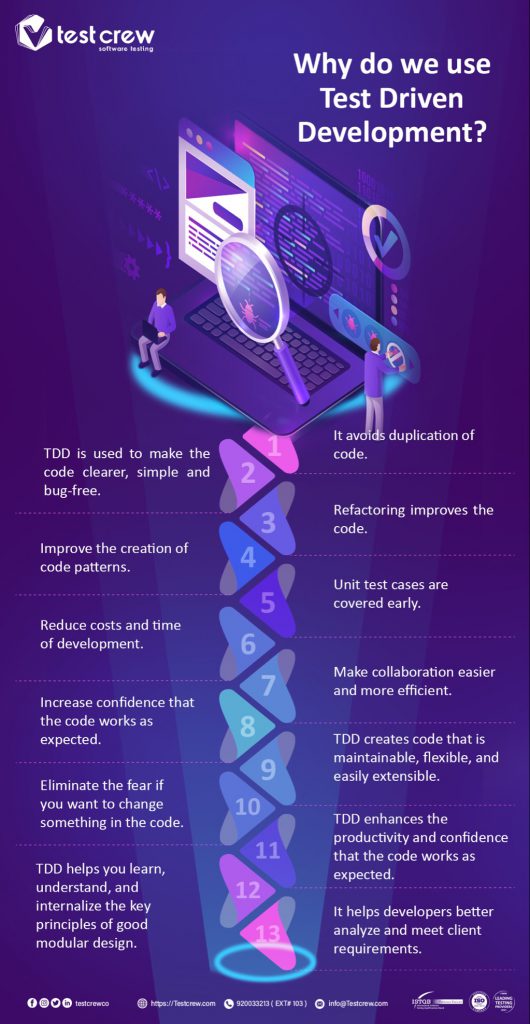
Test-Driven Development (TDD) is a famous and generally-used development methodology in the world of software. Programming is demanding, so the code errors do. It is crucial to identify bugs and errors during software development. This will increase the quality and efficiency of the product. Therefore, if you are an agile software developer, TDD is the […]
Test-Driven Development (TDD) is a famous and generally-used development methodology in the world of software. Programming is demanding, so the code errors do. It is crucial to identify bugs and errors during software development. This will increase the quality and efficiency of the product. Therefore, if you are an agile software developer, TDD is the best practice you should use during software development.
This article describes the basic concepts of test-driven development (TDD). You will learn what test-driven development is, why you should be using it, how to implement and what frameworks are most suitable to do that.
This article is part of three articles:
Test-Driven Development (TDD) is a methodology in software development that focuses on creating unit test cases before developing the actual code. In other words, it’s one direction to think through your needs before your write your functional code. TDD is part of the Agile software development methodology. It directly supports the Agile value of “Working software over comprehensive documentation”.
In TDD, developers create small test cases for every feature, the test might fail, and then they implement changes on the code until the test passes. Do you think this is madness? However, in the end, you will get a professional code that is hard to break in the long run. The primary goal of this approach is to modify or write new code only if the tests fail. This prevents duplication of code.
Test-Driven Development methodology encourages writing testable code. When developers practice the TDD approach, they build a safety foundation to find all the errors before damaging the system. The benefits of TDD have to do with more than just the simple validation of correctness. Here, some of the advantages of TDD:

Test-Driven Development is a method in which the test is written first and then the code that will make this test functional. TDD improves the quality of the software project in the long run. This sequence of steps is generally followed to get to TDD:
During writing tests, it is better to keep them as small and simple as possible. Small tests are easier to understand and help with readability. In Addition, it is more manageable to find and fix errors while in case a test does not pass.

Here is an example to explain how to implement TDD tests using the steps mentioned before using Java. In this example, we suppose that we need to develop a login function for an application that has a username, password and a submit button.
Step 1: Add a test case.

Step 2: Execute the test and check if there is an error displays that the Login page is not defined and the methods enterUserName, enterPassword and submit are not found.
Step 3: Write the code for the previous test case that fulfills the requirement and passes the test. This code will enter the username and password and get a home page object when they are correct.

Step 4: Run all tests again and ensure all tests pass.
Step 5: Refactor the code if needed. When the if conditions are not true, correct error messages will be given.

Now try to write a new test case with an empty username and password as these lines. If you run it, it will fail.

Repeat the steps from 1 to 5 until the feature or user requirement is implemented.
TestCrew is keen to implement quality tests regularly as well as provide international standards software-testing training. TestCrew also provides all technical, functional, and non-functional software quality test services related to user experience, which ensure the security and protection of end products from vulnerabilities and the risks of penetration, as per the standards of ISTQB and Test Maturity Model Integration Professional certification (TMMi).
In addition to that, TestCrew also offers software quality consulting services, you can also know more about what we do by visiting the various communication channels mentioned on our page, LinkedIn, email, or through our unified number.